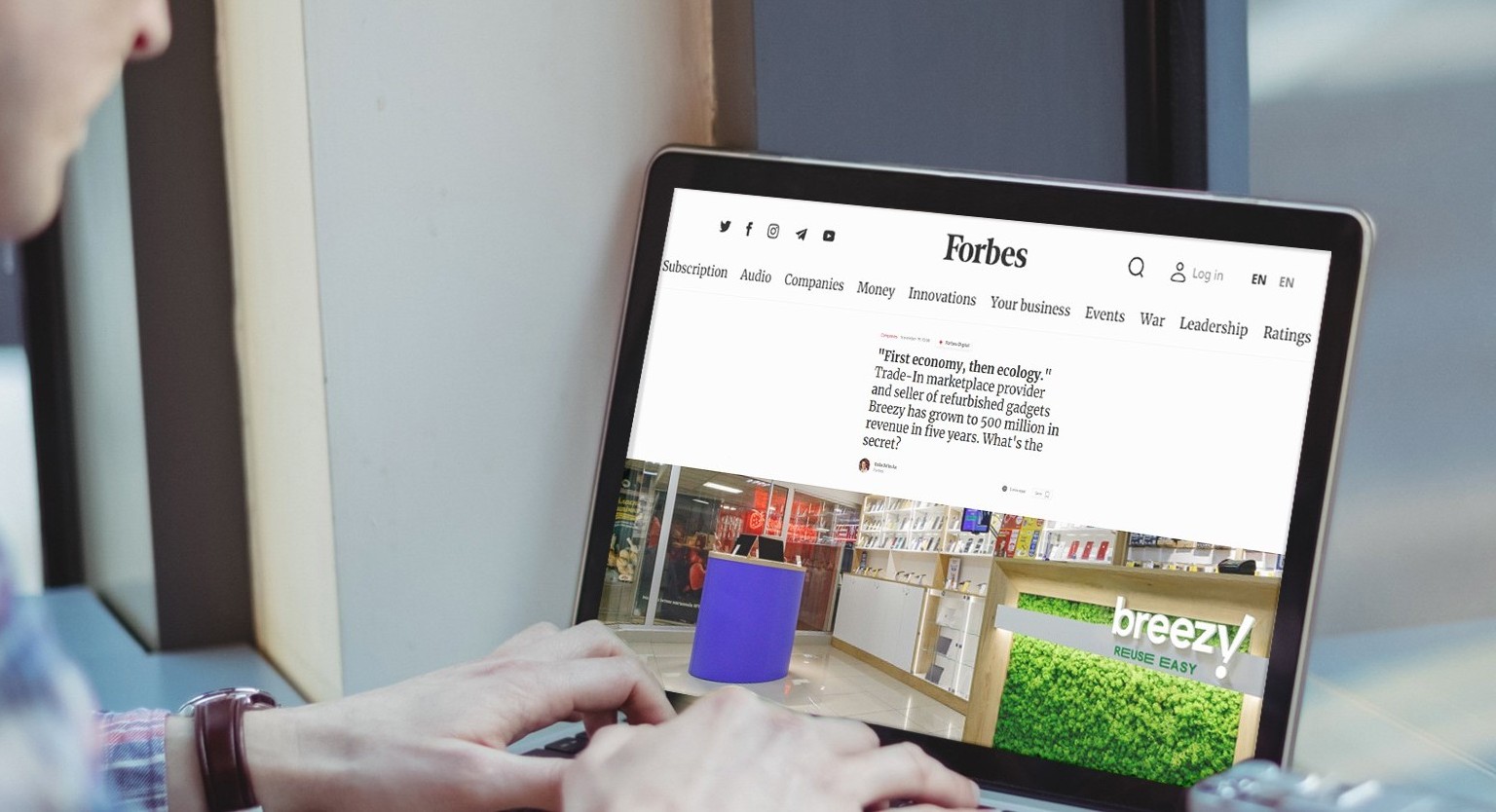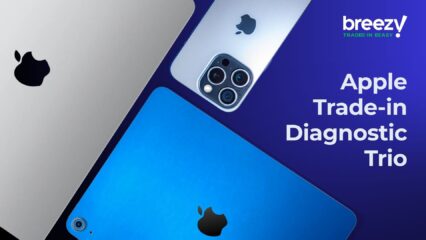Forbes Україна про те, як Breezy виріс за п’ять років до 500 млн виторгу
Yuliya Belinska, editor at Forbes Ukraine, spoke with Breezy CEO Andrii Kosar and key players in Ukrainian retail about the surge in demand for device trade-ins, growing trust in refurbished devices, and how AI is transforming the industry. We’ve compiled the highlights for you. The full article is available via the link (and it’s definitely…

Yuliya Belinska, editor at Forbes Ukraine, spoke with Breezy CEO Andrii Kosar and key players in Ukrainian retail about the surge in demand for device trade-ins, growing trust in refurbished devices, and how AI is transforming the industry.
We’ve compiled the highlights for you. The full article is available via the link (and it’s definitely worth a read).
Turning old gadgets into valuable assets
Millions of gadgets are just sitting in drawers, even though they’re valuable assets.
Since Breezy was founded in 2020, the business has grown exponentially year over year. In the first 9 months of 2025, Breezy’s revenue in Ukraine reached 541 million hryvnias – more than double the entire 2024 figure. The company projects that throughout 2025, Ukrainians will bring in one million used devices for Breezy to evaluate.
Demand for trading in old devices and purchasing refurbished gadgets is on the rise, confirm the retailers surveyed. Trade-in services and refurbished smartphones have been around for decades. So why the boom now?
Crowing consumer trust
Average monthly sales of refurbished smartphones at Comfy retail chain show double-digit growth month over month, according to Irina Chelpanova, Head of Consumer Electronics Service Products at Comfy. This category now accounts for approximately 5% of smartphone sales revenue, and for iPhones specifically, it exceeds 20%.
Refurbished smartphones are no longer a niche segment – they’re a new growth driver for Comfy,” Irina Chelpanova notes.
A year ago, refurbished smartphones accounted for 3.5% of sales at the Kibernetiki chain, says its co-founder Denys Savchenko. This year, that figure stands at 6%.
Breezy estimates the Ukrainian secondary tech market at $360 million, with Apple devices accounting for $150-180 million. Refurbished Apple gadgets represent 20% of this, or $30-36 million.

How Breezy works
The company purchases used gadgets through a network of partners – Comfy, Foxtrot, Epicentr, Vodafone, Rozetka and Kibernetiki stores. Breezy accepts over 10,000 device models: smartphones, tablets, laptops, smartwatches and gaming consoles.
Traded-in gadgets enter Breezy’s production facility, where it’s tested against 55 criteria. If necessary, components are replaced (most commonly the battery), it’s cleaned and disinfected, data is certified erased, or a screen may be polished. All testing data and photos are recorded in a special device passport that can be accessed via QR code on the box, Kosar explains. These devices then return to market: at Breezy retail or partner stores.
Large retailers account for approximately half of Breezy’s refurbished gadget sales, with the rest coming through their own e-commerce platform and smaller retailers with 1-5 stores, according to the CEO.

AI is a game-changer
Since July 2024, Breezy has been using AI to assess device cosmetic condition by photos. This has reduced discrepancies from 23% to under 1%, while enabling the company to offer customers better trade-in prices.
The AI model was trained with Breezy’s proprietary database. Assessment is aligned with human support staff who help train the system.

In Ukraine, the online trade-in by Breezy is fully operational at Comfy and Foxtrot, and is being implemented at five additional chains, says Kosar.
Trade-in has significant potential as a standalone product. Our goal is to reach a stable benchmark of 50% of purchases utilizing the exchange program.
Breezy’s plans call for annual growth of at least 30%. “We aspire to make trade-in a new consumer habit,” Kosar hopes.
Benefits for retailers: Higher basket size and cross-selling
Foxtrot launched its trade-in service two years ago. “Since launch, the volume of accepted gadgets has grown eightfold,” added Ruslan Doroshenko from Foxtrot.
Device trade-ins help retailers increase average transaction value through sales of additional services and accessories, adds Irina Chelpanova from Comfy.
Another advantage for retailers is the new gadget sales growth.
Approximately 20% of new Apple devices are purchased through the trade-in, and during new model launches or holiday promotions, this figure rises to 50%.
Trade-in’s positive environmental impact motivates Apple and Samsung to support this program, Kosar shared. Vendors offer customers top-ups for upgrading through trade-in, which can cover up to 60% of a new device’s price.






 Міжнародний
Міжнародний  Україна
Україна  Польща
Польща  Грузія
Грузія  Казахстан
Казахстан  Кіпр
Кіпр  Азербайджан
Азербайджан  Moldova
Moldova